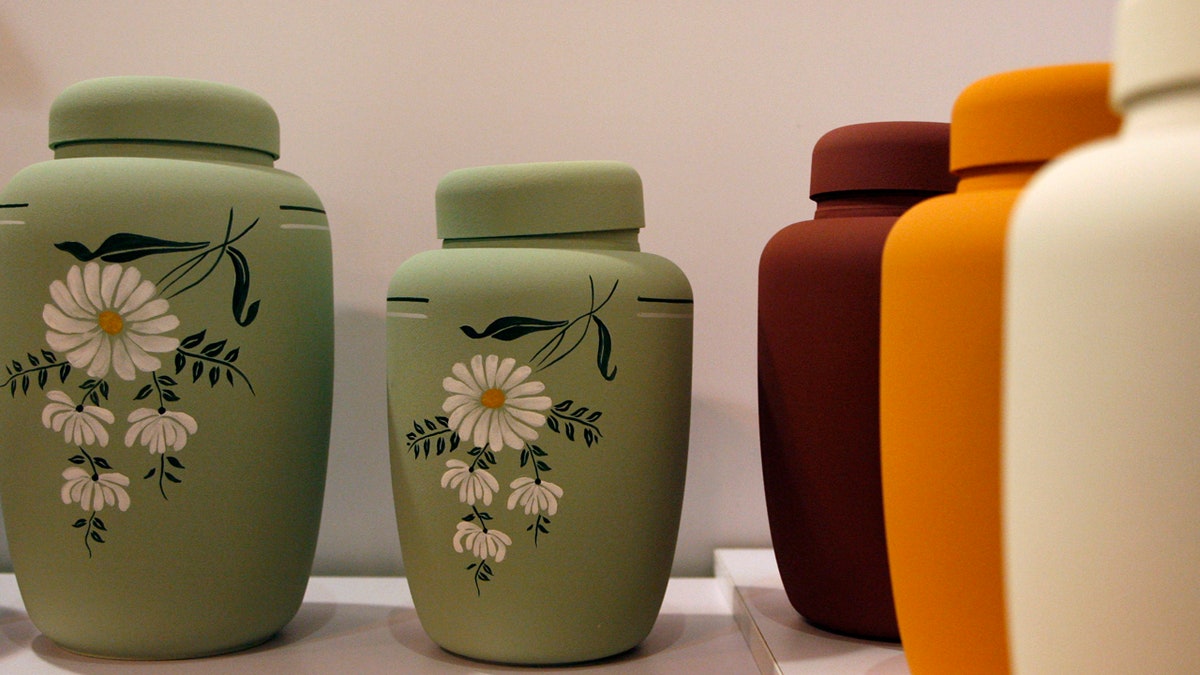
FILE: Eco-friendly cremation urns are displayed during the Asia Funeral Expo at the Macau Tower Convention center. (Reuters)
California Gov. Jerry Brown on Sunday signed into law a controversial bill that will allow the state's residents to select a water cremation, or alkaline hydrolysis, for their end-of-life remains.
The move is considered part of efforts to “green-ify” death, the San Francisco Chronicle reported. The theory goes that — unlike with a standard cremation — the funeral home is not putting carbon emission into the sky.
“Burning Grandma in fire seems to be violent,” Phil Olson, a philosophy professor at Virginia Tech, told the Atlantic, “In contrast, green cremation is ‘putting Grandma in a warm bath.'"
The Chronicle, citing a 2016 report from the National Funeral Directors Association, reported that more people selected cremation rather than burial in 2015. The head of a company that specializes in water cremation told the paper that the amount of energy used in one “flame” cremation could heat a Minnesota home for an entire winter.
“Granted, you’re using water. However, you’re not using fossil fuel and you’re not putting a carbon emission into the sky,” Matt Baskerville, a funeral director in Illinois who uses alkaline hydrolysis, told the paper. “It’s definitely a cleaner and greener option than the traditional flame cremation.”
The procedure is legal in 14 other states. Californians will be able to use the procedure as early as 2020.
The Chronicle reported that the body is put into a “pod-like vat” and bathed in alkaline solution for about four hours at about 300 degrees. The alkaline reportedly accelerates the body’s natural breakdown, the report said. Clean bones are left behind, crushed to ashes and given back to the family.
The Associated Press described the fluid as a "brownish, syrupy residue."
The Archdiocese of San Francisco told the paper that the U.S. Conference of Catholic Bishops has been keeping an eye on the issue and was still deciding whether the church could accept the process.
Vice’s Motherboard interviewed Terry Regnier, director of anatomical services at the Mayo Clinic in Minnesota, last summer about water cremations.
He said he believes the method will be the wave of the future.
“I think if people understand it a little bit more, they might not be so confused,” he said. “They might embrace change a little bit more positively.”
He mentioned that, under the procedure, titanium joint replacements are retrieved intact and could be used again for future patients.




